#czech embroideries
Text

Traditional Czech embroideries and a confused Jiji, now on its way to the USA. I've been obsessed with cezch embroideries lately, they are so delicate and colorful, and it gives me a lot of joy to embroider them.
#czech republic#czech embroideries#ghiblicore#jiji the cat#kiki's delivery service#handmade embroidery#traditional embroidery#embroidery artist#ghibli embroidery#hair bows#handmade accessories#handmadewardrobe#cottagecore aesthetic#dark cottagecore#folkcore
53 notes
·
View notes
Text

"Oh no, not again" me, 2023
This little embroidery is a disguised political reaction to 2023 Slovak elections. One of my profs lost their shit when they Saw it.
#slovakia#czech#ťumblr#ťumbľr#čumblr#embroidery#politics#slovak politics#2023 elections#cross stitch
208 notes
·
View notes
Text

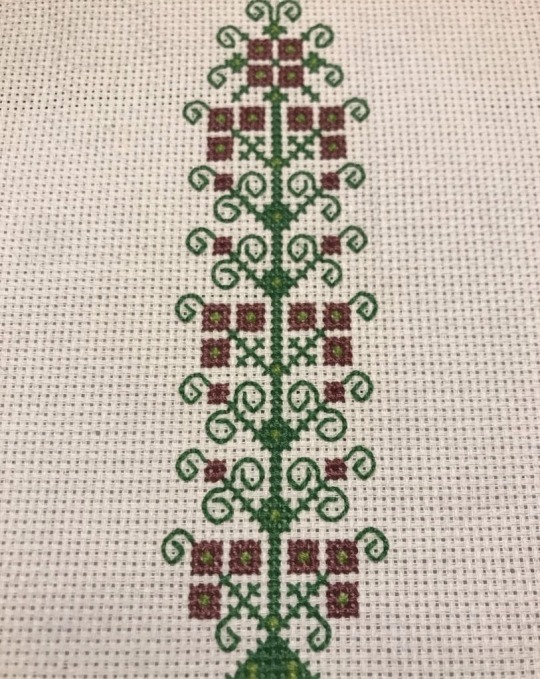




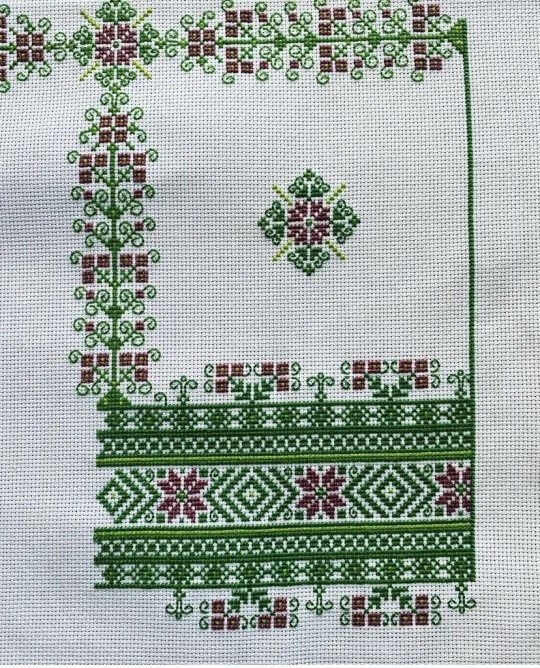


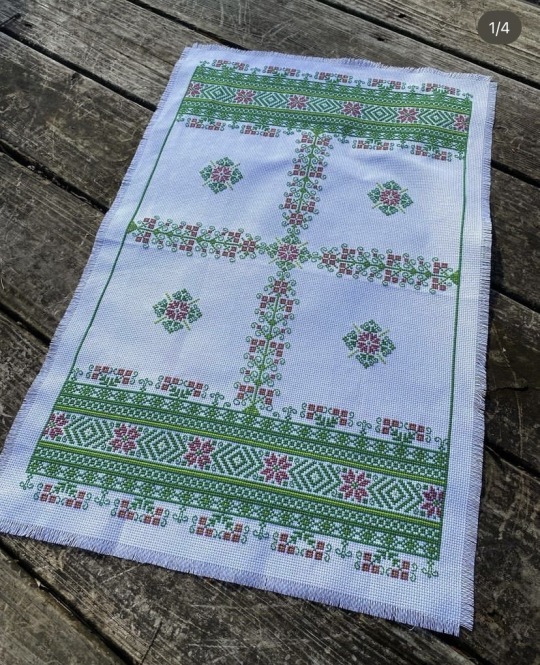
Last year’s May Eve/Walpurgis Night/pálení čarodějnic altar cloth as it was worked. The cross in the center is composed of 4 tree of life/world tree motifs representing the May pole. The colors and flowers represent the life that bursts forth at the beginning of May. The design is composed of patterns adapted from a vintage Czechoslovakian book.
#May Eve#May Day#hexennacht#pálení čarodějnic#Walpurgisnacht#devotional embroidery#folk embroidery#Czech embroidery#slovak embroidery#Czechoslovakian embroidery
67 notes
·
View notes
Text



escaped, found a hideout, still on the run, plato, ostrava, 2024
#art#my art#artwork#art tag#installation art#sculpture#statues#visual arts#visual art#textile art#textiles#embroidery#plato#ostrava#czechia#czech#czechart
4 notes
·
View notes
Text

🐣 Did you know? that, by tradition, not visiting families (and thus not participating in mrskut) on Easter Monday can be considered a great offence to the family?
And if you come late, even a minute late after noon, expect a very cold shower from a vengeful lass. 🐣
Happy Easter (Monday)!!!
Tagging @noldorinpainter cuz 🤲💖 ngl it's us 🤣🤣🤣!!!
Refs/color palettes: 🇨🇿, 🇹🇷
#and here i am with my yearly easter monday czech/moravian traditions trivia 🤲🐣#the turkish gal was a mere visitor and wasn't pushed into the celebrations against her will 😅 i promise 🐣 tho if she wanted... 😅#also simplified embroidery and other stuff on both gals 😔 forgive me 🌼#non-arda stuff#easter#easter monday#slavic culture#turkic culture#moravian culture#hanakian culture#hanakian traditional clothing#central turkish traditional clothing#art#my art#joli's art#traditional art#digital art
16 notes
·
View notes
Text
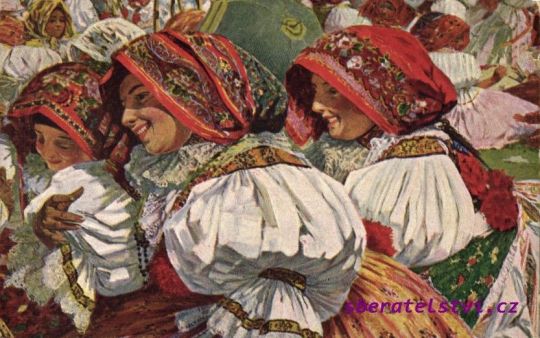
Na pouti - by Czech artist Joža Uprka (1861-1940, Hroznová Lhota), painter and graphic artist, whose work combines elements of Romanticism and Art Nouveau to document the folklife of Southern Moravia.
#folkways#Na pouti#Czech#Joža Uprka#Joža Uprka (1861-1940#Hroznová Lhota#folklife#Southern Moravia#traditions#culture#czech costumes#beauty in the detail#textiles#embroidery#ancestors alive!#what is remembered lives#memory & spirit of place#ancient ways#sacred ways#love#life
3 notes
·
View notes
Photo
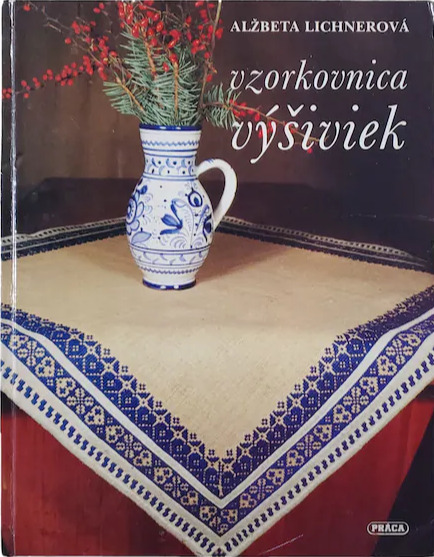


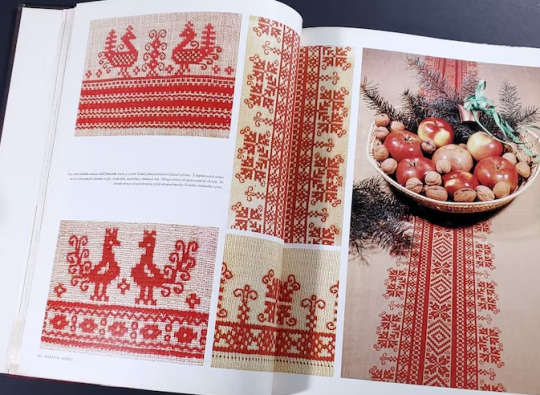
After years of searching, and having a difficult time finding Western Slavic counted thread embroidery patterns, I just found my second vintage Czechoslovakian book in a couple of months. I’ll be anxiously checking the mail for the next couple of weeks! And my finds have fell close to Christmas and my birthday to justify the purchases!
This year I’ve challenged myself to a year of Czech and Slovakian altar cloths! So far I made one for Christmas and one for Hromnice with the book I purchased right before Christmas. And I’m working on one for Easter.
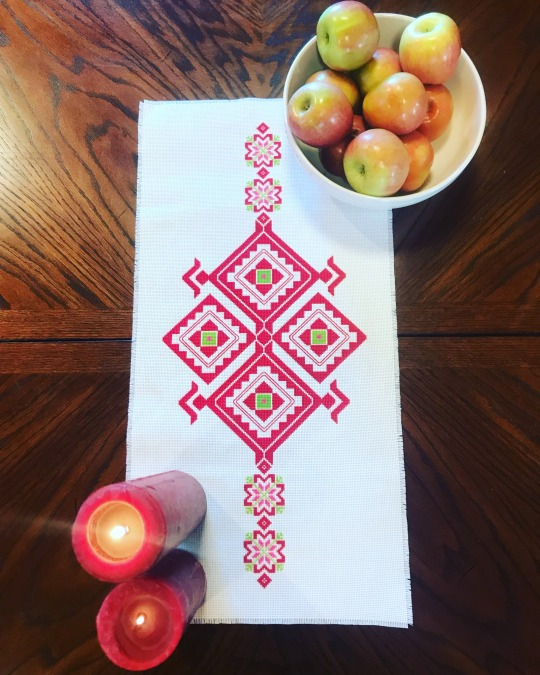

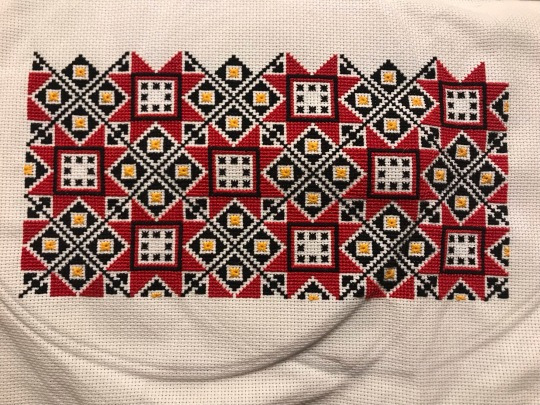
#cross stitch#folk embroidery#embroidery#counted thread embroidery#devotional embroidery#Czech embroidery#Slovakian Embroidery#Czechoslovakian embroidery#Western Slavic embroidery#altar cloth
22 notes
·
View notes
Text
How to prepare an embroidery kit?

Embroidery is a very artistic way to express one’s true creativity. It is a very broad term. It encompasses the use of several techniques, forms, and fabric types.
One of the major problems that beginners face is the preparation of an embroidery kit. While it is true that certain embroidery techniques require specific tools and materials, they are readily available in online stores or at local embroidery supplies stores. In fact, Czech glass beads, fire polished beads and Amos beads can also be now found online.
What are some of the essential tools required for your embroidery kit?
A basic embroidery kit will allow you to work with almost any kind of fabric type, design, or stitch pattern. Given below are certain essential tools that you need to prepare your embroidery kit: -
1. Embroidery Hoop: - These are available in a variety of materials such as wood, plastic, and metal. The wooden version is one of the most widely used hoops for embroidery. Make sure to choose a hoop that is appropriate for your project.
2. Embroidery Needles: - Embroidery needles are sharp and work best for tightly woven fabrics. They have larger eyes and sharper tips and shouldn’t be confused with sewing needles. You can choose to buy a good set of embroidery needles to work with different fabrics.
3. Canvas or Fabric: - Canvas is available in a variety of materials such as cotton, linen, felt or fleece. The fabric should be tightly woven and suitable for embroidery.
4. A pair of scissors: - An embroidery kit is incomplete without a sharp pair of scissors. You can choose to invest in embroidery scissors which are small shaped and sharp. This will allow you to cut more accurately.
5. Thimble: - A thimble prevents injuries caused to your finger by the needlepoint and eye. Embroidery requires detailed handwork therefore securing injuries is inevitable. Therefore, by using a thimble you will be able to protect your fingers from injuries.
6. Light sources: - You can choose a well-lit area for embroidery, but sometimes certain projects require additional light sources. Headbands and neck attachments for light are a good choice. You can also choose a crafting light. It is similar to a lamp, but the light source is stronger. It is portable and can be set up on any flat surface.
7. Floss: -Floss is used to highlight specific areas of your embroidery. They are quite often compared to embroidery threads. The difference can be seen in quantity and its arrangement. Each strand comprises six more threads. Upon unraveling they can then be used as a thread and as floss.
8. Organizers: - Floss and threads can be difficult to organize. This is why you need holders and organizers. A holder prevents your thread or floss from getting tangled. You can choose to buy a premade holder from your local embroidery supply store or choose to make one from cardboard or foam.
Therefore, with the help of the above-mentioned tools, you will be able to build up a basic embroidery kit and get started on your journey!
Source: https://www.finestbeads.com/51124.html
2 notes
·
View notes
Text


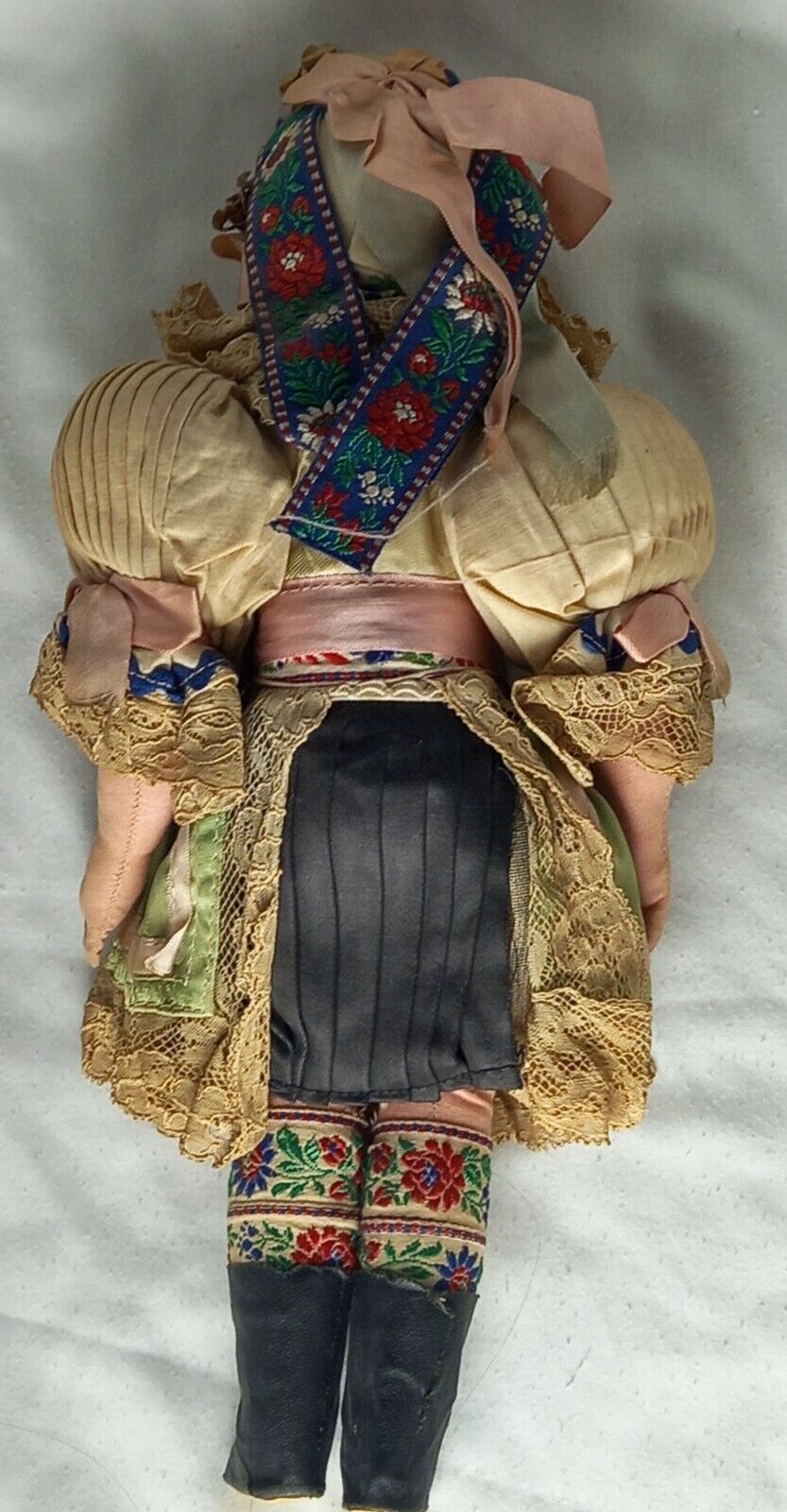

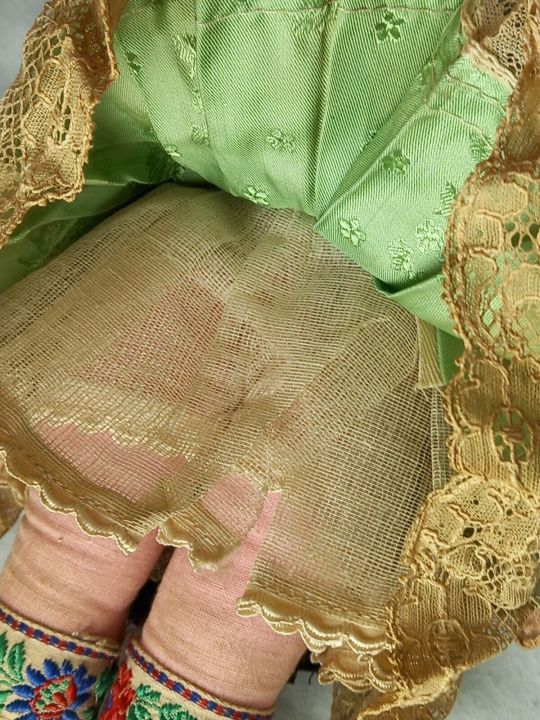

Antique vintage Czechoslavakian Folk Doll, Collectable Czech Doll ebay quirkyvintage1
0 notes
Text

#LOSING MY FUCKING MIND TRYING TO FIND RESOURCES FOR CZECH AND SLOVAKIAN EMBROIDERY PATTERNS#EVERY 1.5TH RESULT IS A PINTEREST BOARD THAT SAYS 'CZECHOSLOVAK AESTHETIC' OR SOME SHIT LIKE THAT#AND NONE OF THEM HELP ME IN THE SLIGHTEST#IVE LOST COUNT OF THE DAYS IVE BEEN SEARCHING FOR A MORSEL OF A LIST WITH PATTERNS NAMED AT ALL#Corvin caws
1 note
·
View note
Text

Surrounded by flowers 💗 with a collar I embroidered by hand, inspired by traditional hungarian and czech motifs 💗
#vintage vibes#cottagecore aesthetic#czech embroideries#traditional embroidery#hand embroidery#handmade accessories#my neighbor totoro#ghibli embroidery#folkcore aesthetic#dark cottagecore#historybounding
21 notes
·
View notes
Text
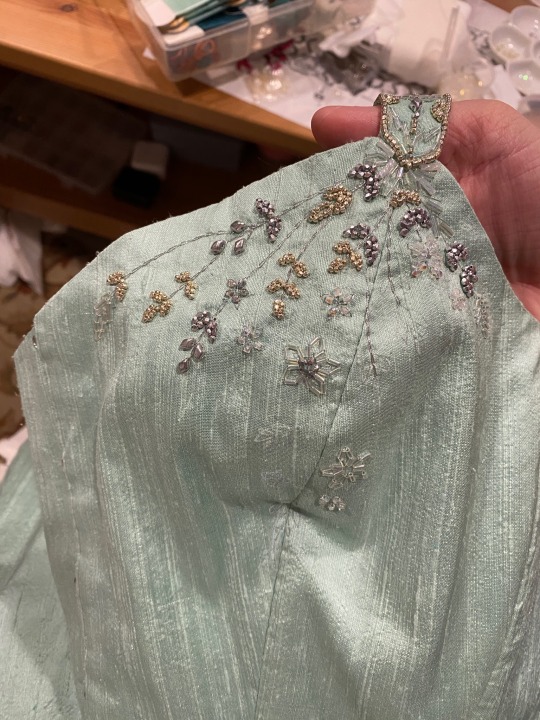
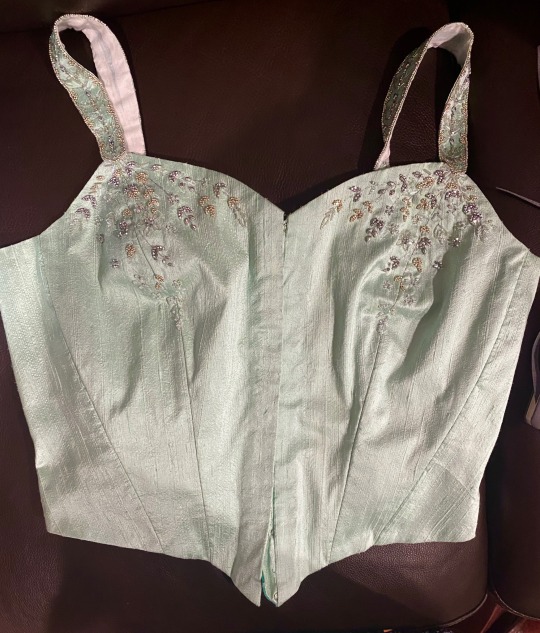
Bodice embellishment is 95% done, and the Glass Gown is starting to live up to its name! I’m finishing up the silver embroidery right now, using a very long chain stitch for most of it. I found that to have the best impact and fluidity for the long stems.
The silver embroidery thread is Sajou ‘Fil au Chinois’ in metallic silver. The beading thread is Kinkame 50wt silk in color #10.
The beads are:
2mm Czech fire-polished in Crystal AB, Crystal w/ Silver AB, and Silver.
mini Gem-duo beads in silver
3mm and 6mm Miyuki smooth bugle beads in Crystal AB
6mm Dyna-mites twist bugle beads in opaque ceylon rainbow white
15/0 Toho “3-cut” seed beads in silver (these have a very warm, nearly gold tone but this added some nice variety).
I actually bought so many other beads for this project but none of them ended up working out. This combo ended up giving me the texture and color variety I wanted while remaining cohesive and restrained. I especially love working with the fire-polished beads. The facets give them so much sparkle and texture while not being chunky or tacky. I will definitely be getting more in more colors for future projects (and also these colors again because they’re so versatile).
#pancake makes the glass gown#pancake talks textiles#the fun thing with ‘crystal’ beads is that they take on a lot of ambient color due to their transparency#the bugle beads look almost ivory in their container but with the blue thread and fabric they look like an icy seafoam#i’ll make a small beading tutorial for the leaves in the future#they’re super simple but really effective#and they have that wonderful victwardian feel
35 notes
·
View notes
Text


I added the Easter/Spring Equinox cloth to the altar today.
#folk embroidery#Czech embroidery#Slovak embroidery#Czechoslovakian embroidery#Goddess embroidery#Slavic#Spring Equinox#Easter#dual faith#Berehynia
60 notes
·
View notes
Text
Elisabeth's wedding dress discovered!... Maybe. Maybe not
Yesterday, and until November 5, the Imperial Carriage Museum at the Schönbrunn put in display a replica of Elisabeth's most elusive gown: her wedding dress. There are no pictures of her on her wedding day, and only the Court members saw her that day. So how did the Museum discovered what the dress looked like?
Well, they didn't. But they have a guess.
In 1989 the Kunsthistorisches Museum acquired from Elisabeth's descendants a train that had belonged to the empress, which allegedly was her wedding train:
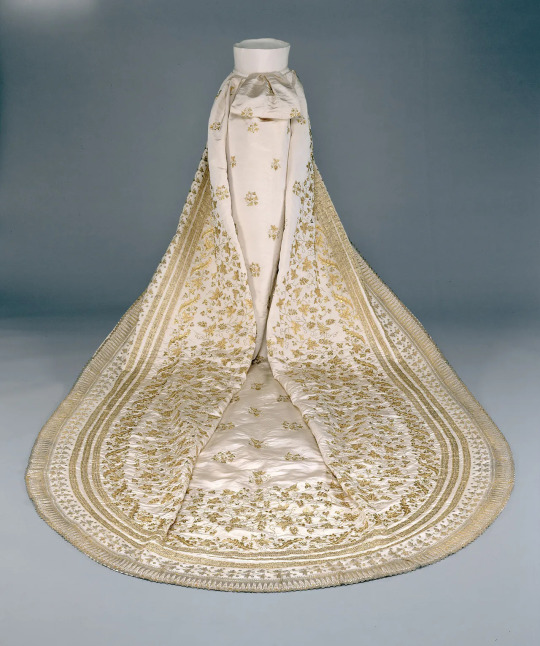
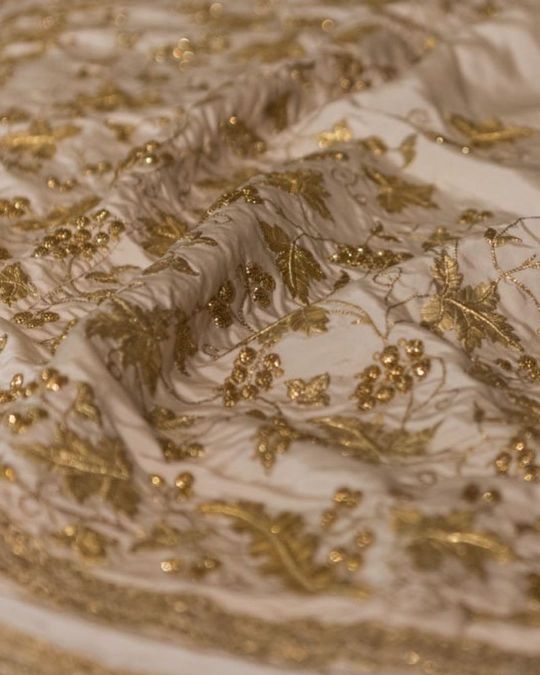
The train has been ever since on permanent display in the Imperial Carriage Museum. Until, in 2021, it came to the attention of the Museum's staff this 1857 state portrait of Elisabeth by Joseph Neugebauer, belonging to the Silesian National Museum in the Czech Republic:

The pattern of the train in the portrait is very similar to the pattern of the train of the Museum, which make them think that maybe... this is the dress Elisabeth wore at her wedding. So they used "the latest technology" to recreate the pattern and make a replica of the dress.
Here is the result!


In my opinion, and with all due respect, this replica is awful. The original clearly had layers of tulle with embroidery; the dress in the museum looks flat and unimpressive next to the portrait. The Museum said that since the goal was just to display the train, they just printed the original pattern on a white dress. Which completely undermines the point of exhibiting this dress as "the replica of Sisi's wedding dress!!!", but what do I know.
All that being said, while personally I'm not convinced that this is the dress to begin with (since the trains aren't even identical), I'd be more than happy if this portrait's dress becomes the "canon" Sisi Wedding Dress, because it's a beautiful gown that looks better than all the Sisi media wedding dresses put together.
#this is kind of old news at this point but well I had two exams last week so I missed it#but i'm genuinely surprised that not a single person from the museum ever saw that portrait before 2021#it's been in wikimedia since at least 2016. i discovered it through pinterest years ago#empress elisabeth of austria
101 notes
·
View notes
Text
ahoj pampelišky! hello dandelions! today, i would like to write something about
❊❀❁the 5 parts of the south bohemian region❁❀✽
each has its own rich and unique culture, cuisine and clothing. i hope you enjoy!
so first, here's a little map:

source here
the red texts are the names of the parts. (if you have no clue what or where this piece of land is or how big it is, here it is on google maps.)
so first, i would like to introduce you the moust southern region,
❀Doudlebsko
the name itself cannot be translated, as the land is literally named after a slavic tribe called Doudlebové (the Doudlebs), that lived here sometime in 6. - 7. century AC. theres even a fricking village named after them! they also lived in Slovenia and Ukraine.
The region was never very rich, 'cause there's quite a lot of mountains and stuff, so farming isn't too easy here. instead, there were lots of craftsmen - glassmakers, weavers, lace makers. people also cut wood since most of the region is even nowadays covered with forests. because of that, the traditional clothing is - compared to other regions - very simple. but im probably going to post lots of stuff about clothing in the future, so i dont want to get into that very much rn.
❀Blata
the name is literally translated as ,,the Muds" or better, ,,the Morasses". and its very honest tbh. the land is very flat, fertile and wet. there were lots of swamps in here, but the economy ruined the most of them (mostly in the 19. century) because they mined peat and used it in the glass shops as fuel.
the land was very rich compared to Doudlebsko, and that influenced the clothing. it is very rich and colorful, with lots of layers and embroideries.
❀Táborsko/Kozácko
A small, not very important region around the town Tábor. The clothing is pretty influenced by the middle bohemian culture, but still has its own unique traits. my favourite item from the traditional dress is a white apron with little embroidered red flowers.
ok im pretty tired already, so im going to write abt the other parts later. id also like to tell you a few cute czech idioms soon :)
anyway
have a sunny day☼
byee♡✽
#čumblr#obrozujeme#slavic history#slavic representation#slavic culture#slavic#czech culture#bohemia#bohemian culture#bohemian#south bohemia
58 notes
·
View notes
Text
HANÁCKÝ KROJ TRADITIONAL FOLK DRESS FROM CZECHOSLOVAKIA
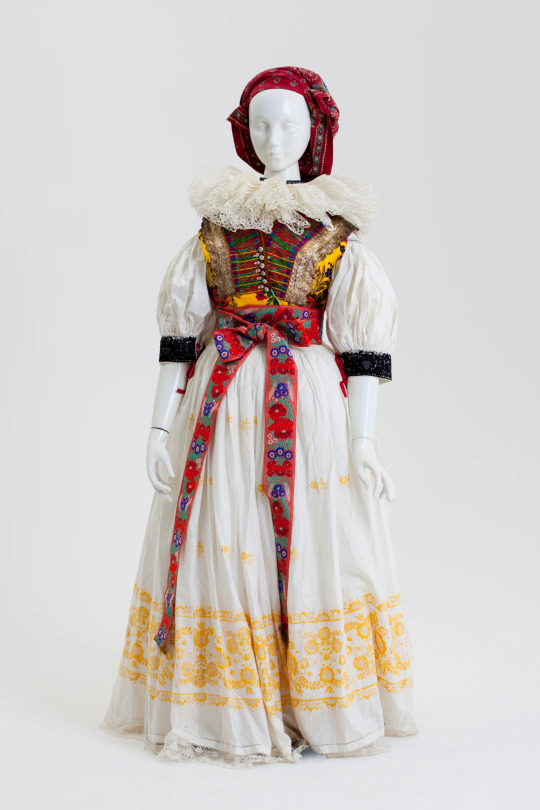


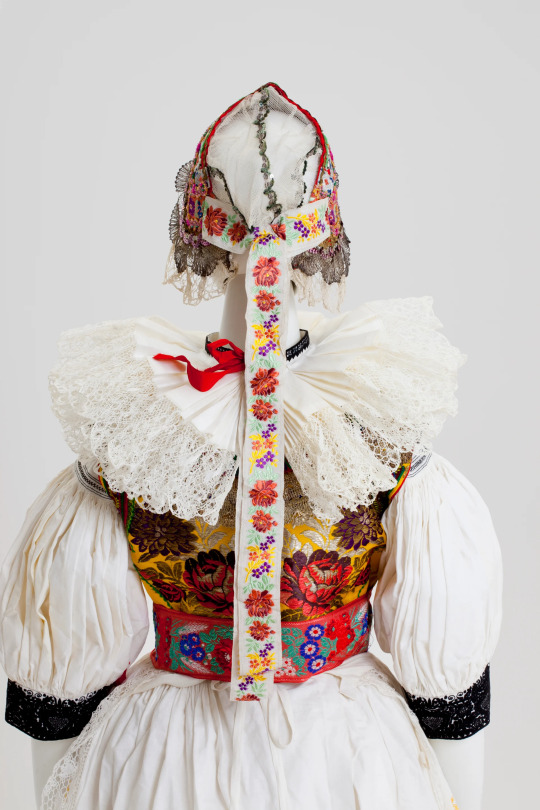


Powerhouse Collection
Outfit, hanacky kroj (traditional folk dress), womens, cotton / embroidery / lace / silk, embroidered in part and worn by Olga Kupkova (nee Skacelova), designed and made in the Hana region of Moravia, former Czechoslovakia (Protectorate of Bohemia and Moravia), 1940
This women's hanacky kroj dating from 1940 is a well provenanced example of traditional dress from the Hana region of Moravia in Czechoslavakia. Worn and partly made by Olga Kupkova the dress includes twelve components, intricately constructed and embroidered by specialist seamstresses and needleworkers, reflecting the time, expense and variety of skills that go into creating hanacky kroj. The style and design reflect the importance placed on communicating and celebrating regional identity through dress. In addition its elaborate composition and embellishment are meant to remind the viewer that it originates from Hana, one of the most prosperous areas of Moravia, which was renowned for producing the richest and most complicated designs. The related Hanacky Kroj book explains the social significance of the hanacky kroj, the very specific conventions for manufacture and wear. This is reinforced through the inclusion of patterns for components of the outfit and embroidery, step by step instructions on how to make it and information on the fabric, threads, starches and the costs involved as well as the names and addresses of specialist makers including shoe makers, embroiderers, lace makers and seamstresses who can assist with making components of the outfit. The social and cultural importance of kroj is explained in the introduction by Dr Jan Kuhndel 'Kroj is an expensive, precious and sacred symbol of national and tribal tradition. It is a child of the Baroque era and its style, in which Czech soul found its festive days, cultural base and unqiue folk art. Every kroj is a mirror and a expression of its era, its region, and its people.' Furthermore, as records of Czechoslovakian immigration in New South Wales, the garments form part of an important historical narrative concerning the experience of refugee escape and settlement in Australia. The significance of the costume collection is further increased by its well provenanced history associated with the Skacelova/Kupkova/Slezacek family and the accompanying photographs of Olga Kupkova wearing the hanacky kroj and Olga Slezacek wearing the childs traditional dress. Glynis Jones, Curator and Sarah Crowe, intern, May 2011. References Cizkova, M. and V, Prostejove. 1940. Hanacky Kroj, Czechoslovakia. Hargreaves, B. n.d. Migrants of the Nepean Valley. NSW. Snowden, J. 1979. The Folk Dress of Europe. Mills and Boon: London, Sydney, Toronto.
26 notes
·
View notes